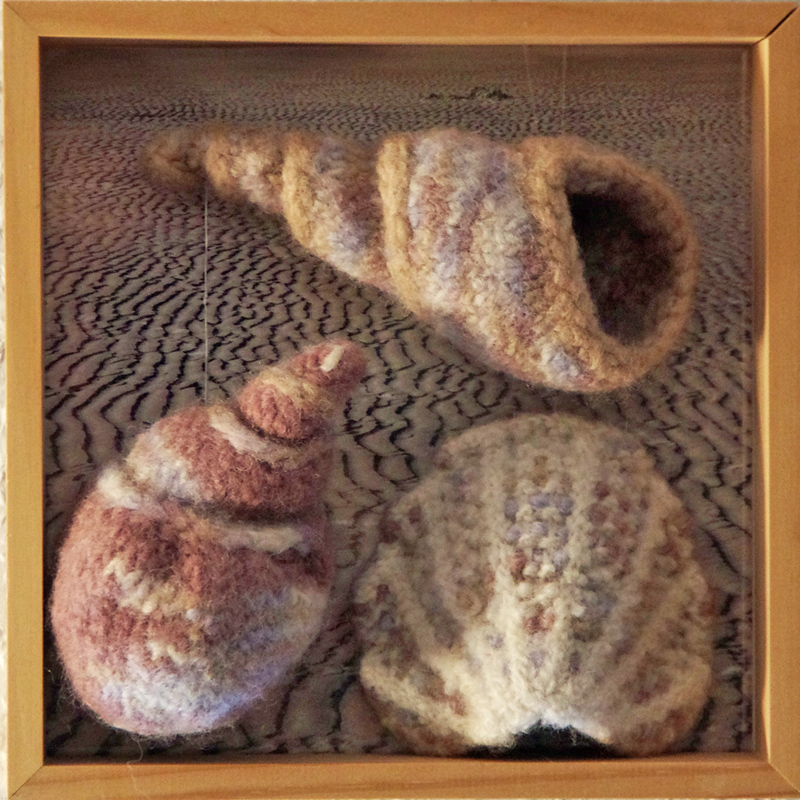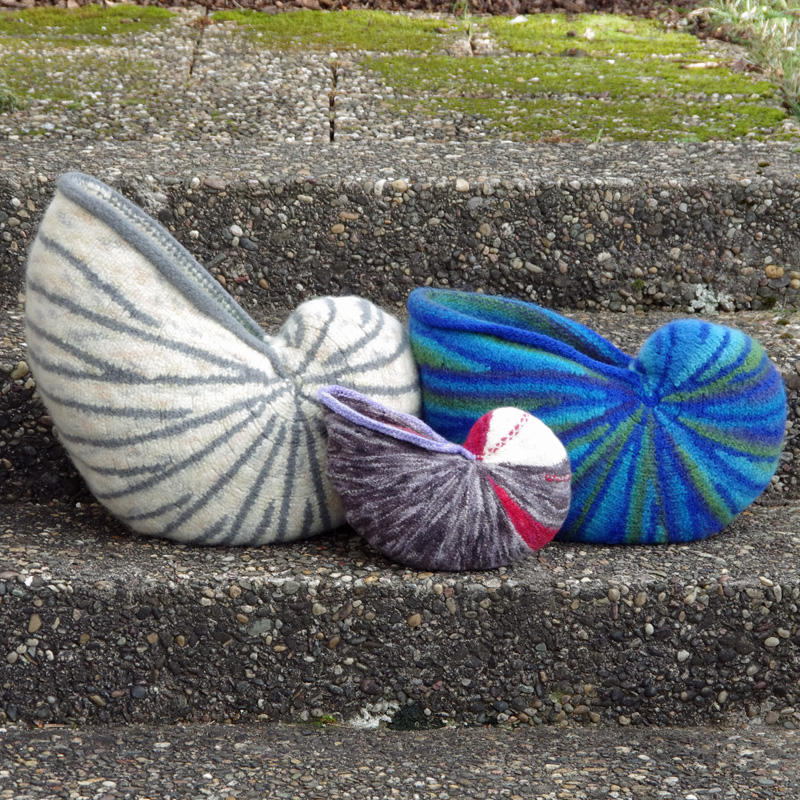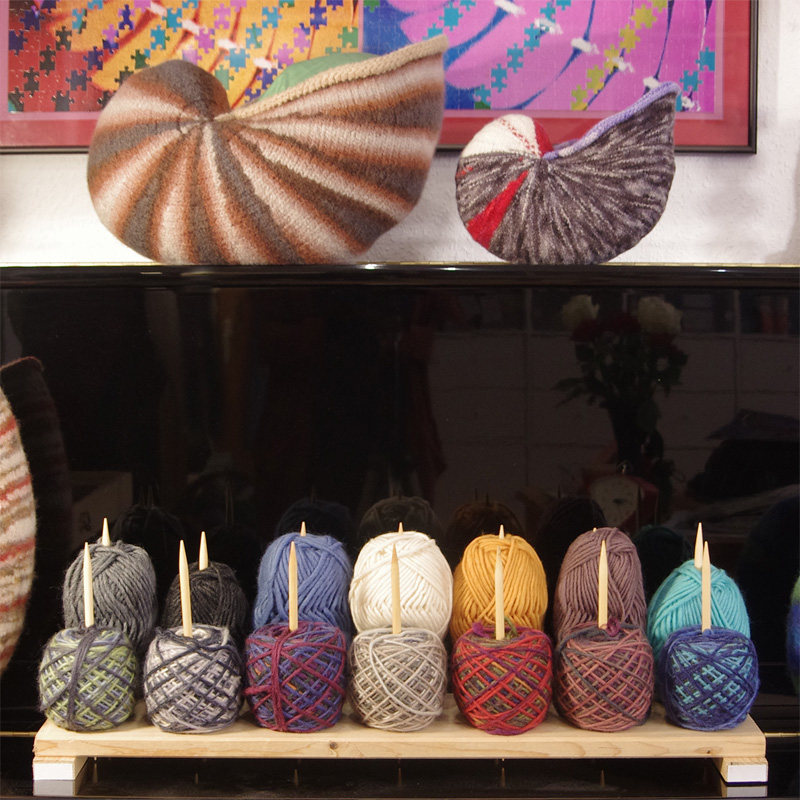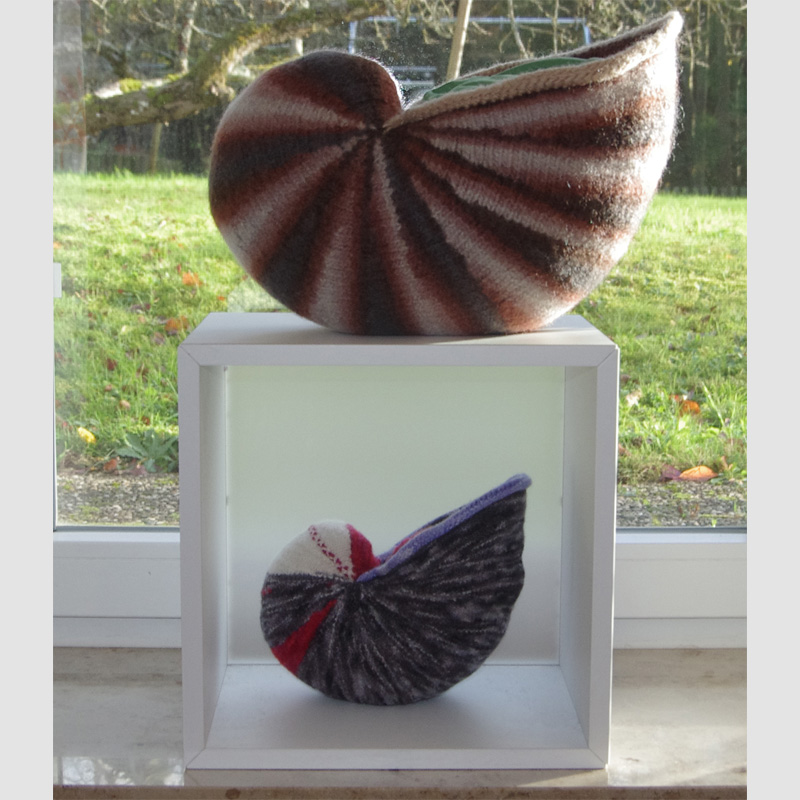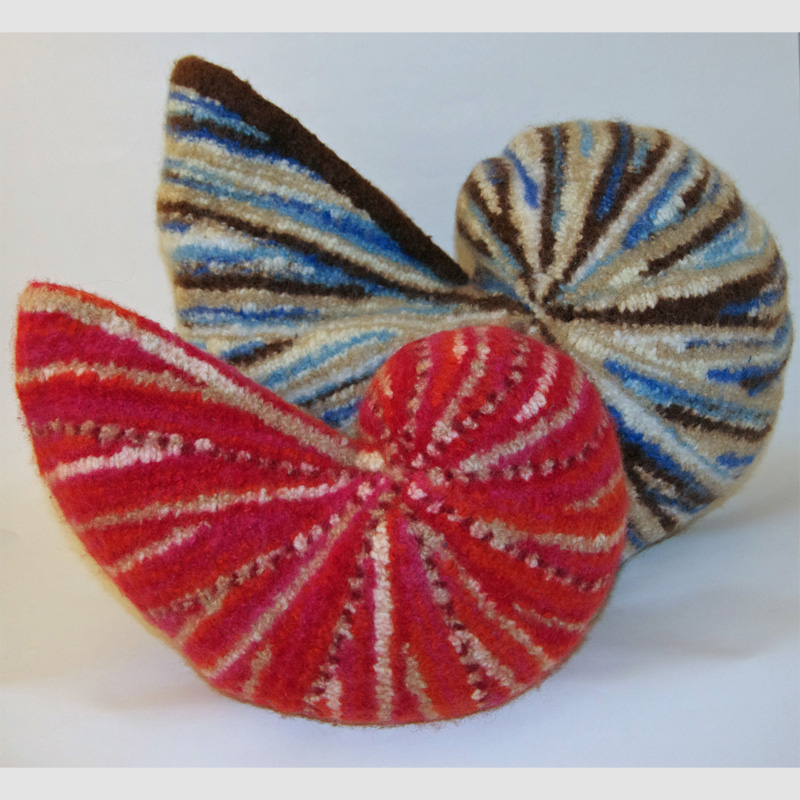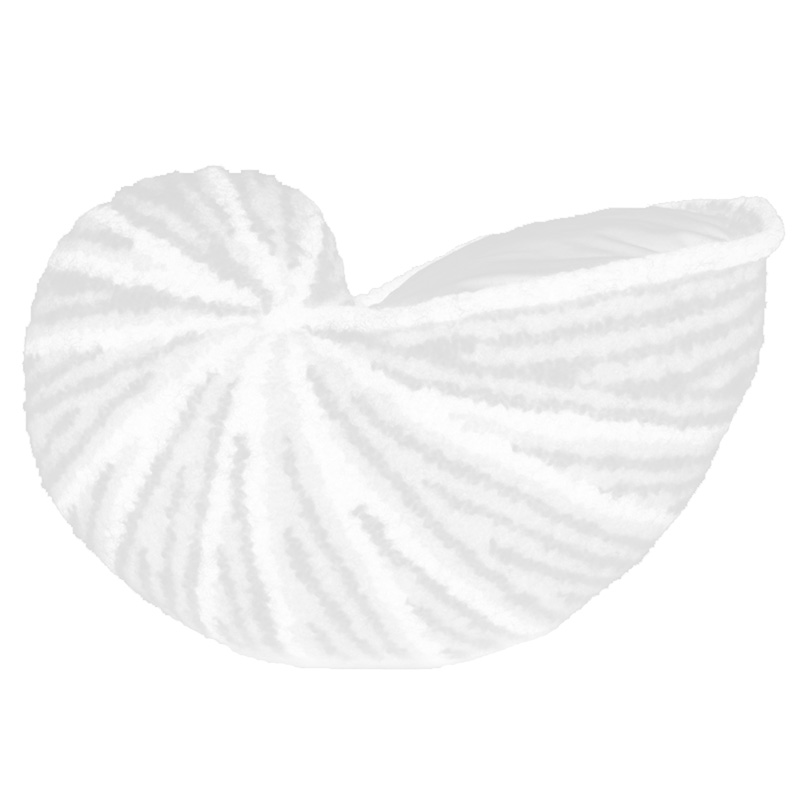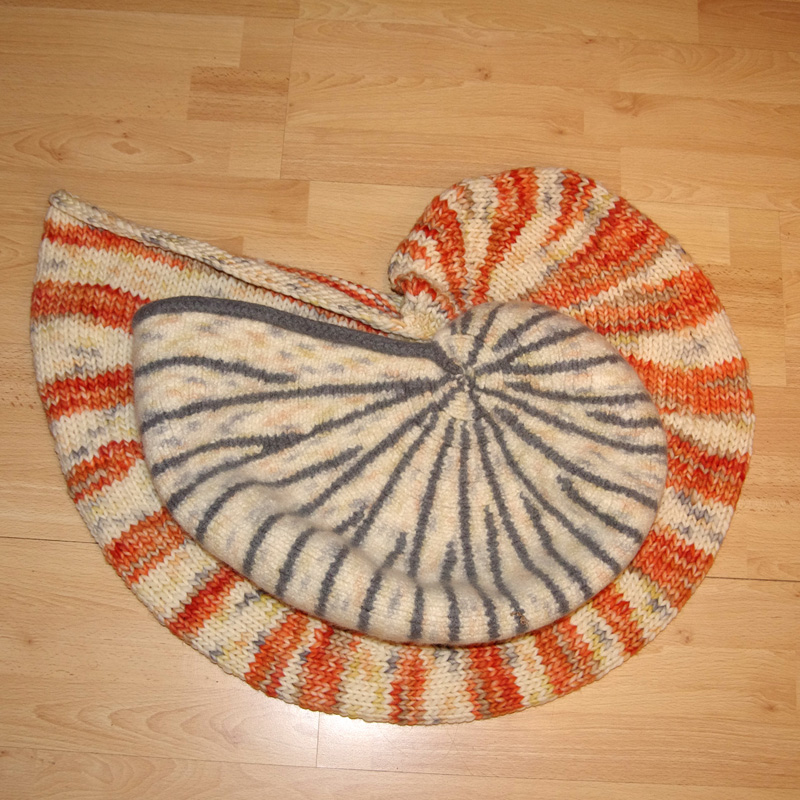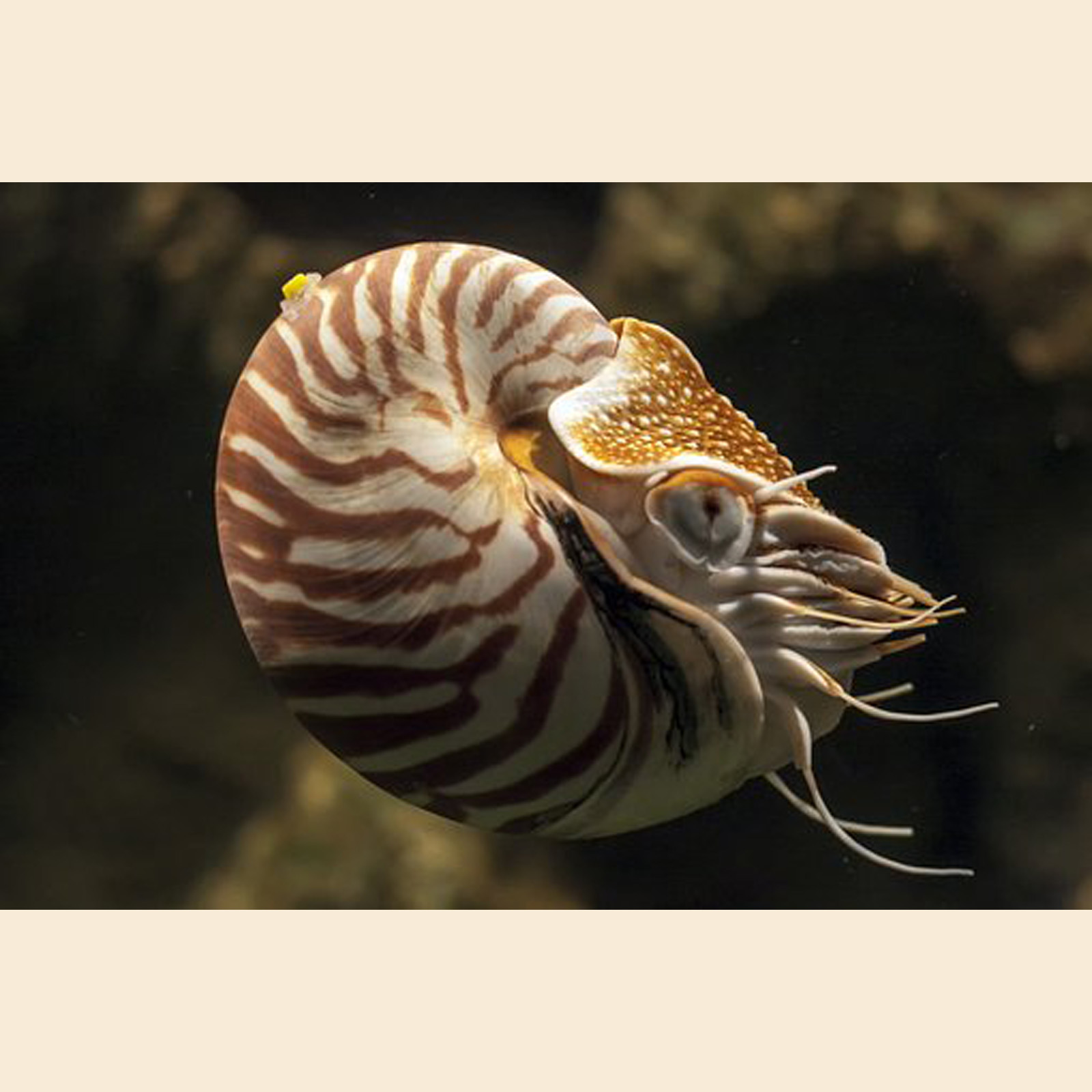Strickpaket: Nautilino und Nautilus – Strickfilz – Schneckenkissen klein und groß – Snail-Pillows small and big – Deutsch und Englisch
34,00 € – 56,00 €
Beschreibung
English description underneath this text! pattern in PDF
Nautilus in XL oder Nautilino in XS?
das entscheidet Deine Woll- und damit Nadelstärkenwahl
Endlich kannst Du Dir selbst eine Nautilus stricken und in der Waschmaschine filzen. Jede Nautilino wird anders, jede Verlaufswolle die Du dafür nehmen kannst, gibt es nur in geringer Stückzahl, selbst aus der gleichen Wolle werden die Schnecken verschieden aussehen!
Schon seit 2015, dem Entstehungsjahr dieses Strickmusters und dadurch des Ateliers – wurde ich immer wieder nach dieser Anleitung gefragt. Mit Hilfe meiner Strickmustersoftware ist die Anleitung nun in Bild und (Strick- und Text-) Schrift klar verständlich. Die Anleitung ist in PDF: in viiielen Seiten, in Diagramm, Strickschrift und Skizzen. Einige allgemeine Stricktechniken wie Maschen aufhäkeln oder verkürzte Reihen sind auch erläutert. Tipps für Schneckenvariationen stehen ebenso dabei.
Dass Ihr ein Gefühl dafür bekommt wie sehr das Gestrick in der Maschine schrumpft (ca. 30-40 %), hängt ein Beispielbild an: zwei Schnecken liegen aufeinander, die obere ist bereits gefilzt und war davor so groß wie die untere Schnecke.
Die einfachste Variante für das Nautilus-Stricken (u.a. am wenigsten Fäden zu verwahren) ist zunächst eine Nautilus ohne Speichen zu stricken aus Wolle mit großem Farbverlauf (nur in Größe L mgl). Mit Speichen meine ich die Linien von der Mitte des Gehäuses nach außen. Zur Verlaufswolle benötigt Ihr immer ein Kontrastgarn für den Schneckenhaus-Eingang. Strickt Ihr eine Nautilus mit Speichen, braucht Ihr mehr von dieser Kontrastwolle.
XL Die größte Schnecke (das größte Kissen) 600 g Wolle
bekommt Ihr mit super bulky Wolle, es ist gefilzt ca. 55cm x 43 cm. Das strickt Ihr aus Bulky light (print) Nadel 10-12 von Rosários4, handgefärbt. Man strickt eine Nautilus aus dieser Wolle unbedingt mit Speichen, dass das Muster optimal zur Geltung kommt. Ihr braucht 400 g Hauptfarbe und 200 g Speichenfarbe (Beispielfoto in wollweiß/ grau). Oder Ihr strickt es in einer für diese Wolle entwickelten neuen Variante mit breiteren Speichen, dann benötigt ihr je 300 g helle und 300 g dunkle Wolle (Beispielfoto in wollweiß/ rost-orange-Tönen, bei dem zwei Schnecken aufeinander liegen). Der Paketpreis ist gleich. Wegen des großen Lagerbedarfs solch dicker Wolle habe ich nur wenig vorrätig! Sobald möglich, bestelle ich immer wieder ein Kilo pro Farbe nach.
L – Etwas kleiner wird das Kissen aus 350-400 g „normaler“ bulky Filzwolle
Ein Kissen in der Größe der blauen Nautilino bekommt ihr mit „normaler“ Filzwolle (ca 45 cm). Schönes Schneckenmuster erhaltet Ihr mit 300g bunter Verlaufswolle (Nadel 6-8). Falls Du locker strickst und 8er Nadeln nimmst, empfehle ich sicherheitshalber 400 g Verlaufswolle (+ 6,95/+10 €).
Kontrastgarn findet Ihr unter Filzwolle in Blautönen, Filzwolle in Grüntönen, Filzwolle Gelb bis Rot, Filzwolle Weiß bis Schwarz. Ohne Speichen braucht ihr da 50 g, mit Speichen mindestens 100 g.
M-L Fast so ein großes Kissen 400 g handgesponnene Wolle
wird es aus (300 g Hauptfarbe, 100 g Kontrastfarbe) handgesponnener, nach Ökotex Standard 100 gefärbte Naturwolle Michels(Nadel 5-7). Jeder Strang ein Unikat – mehr Individualität geht fast nicht. Das Beispielfoto mit roter und braunweißer Nautilino sind aus dieser Wolle. Strickst Du locker, dann brauchst Du zur Sicherheit 400 g der Hauptfarbe (+12 €)!
XS – Ein kleineres Kissen 200 g Wolle
Ebenso individuell, wenn auch kleiner, weniger steif, aber dafür kuscheliger wird Euer Kissen, wenn Ihr die faire handgefärbte „Worsted“ von malabrigo(Nadel 4-5) nehmt. Bei dem Foto vor unserem Fenster seht Ihr den Größenunterschied deutlich. Die untere Schnecke ist aus Worsted-Resten gestrickt. Ein Knäuel pro Farbe reicht, wenn Ihr nicht zu locker strickt und sicherheitshalber 4,5er Nadeln nehmt. Aus den Wollresten könnt Ihr eventuell eine gegengleiche Nautilino oder eine Wellhornschnecken-Familie stricken.
Wie komme ich zu meiner Nautilino?
Das Strickpaket aus Eurem Wunschmaterial bestellt Ihr hier und bekommt Wolle und Anleitung: Voraussetzung – Ihr schreibt mir in einer Mail (strickstrand@gmx.de), welche Farbe und Menge Ihr möchtet. Voraussetzung ist zusätzlich dass ich die Wolle in ausreichender Menge im Vorrat habe, das seht Ihr hier im Shop. Findet Ihr bei der jeweils günstigeren Verlaufswolle Euer Material, meldet Euch, dann reduziert sich der Paketpreis. Alternativ könnt Ihr Euch die Anleitung bei Ravelry für 12 € herunterladen.
Ihr könnt Euch nicht vorstellen wie die Schnecke mit Eurer gewählten Wolle aussehen könnte?
Zur Entscheidungshilfe habe ich Euch fast transparente Skizzen bei den Fotos eingestellt, diese könnt Ihr ausdrucken und mit Farbstiften ausmalen. Auch seht Ihr ein Foto auf dem Wollknäul-Kombinationen von Verlaufswolle und einfarbiger Wolle als Beispiele auf meinem Klavier ausgestellt sind. Ich stelle mir folgende Fragen wenn ich ein Raumobjekt entwerfe:
Wo soll es platziert werden? Welche Größe passt dorthin? Welche Farben passen an diesen Platz?
Möchte ich das Objekt auffällig? dann wähle ich eine Kontrastfarbe (= Komplementärfarbe des Farbkreises) – oder Ton in Ton zum Rest?
Bei einer Schnecke bietet sich auch die Frage an: in Naturfarben (Waldschnecke/ Weinbergschnecke/ Südsee- oder Nordsee-Strandschnecke/ bunte Korallenriff-Schnecke) oder nur passend zum Raum?
Mit Speichen, oder ohne Speichen stricken? Die blaue Nautilino des Titelfotos ist mit Speichen gestrickt, die sind Leuchtblau, fallen aber in der Verlaufswolle nicht auf und wirken Ton in Ton. Ohne diese Speichen wäre die Schnecke allerdings kaum blau. Die weiße Nautilus ist offensichtlich mit grauen Speichen gestrickt – nur die Verlaufswolle bewirkt das Muster bei der braunen Nautilino vor dem Fenster, sie ist ohne Speichen gestrickt (jede Verlaufswolle ergibt ein anderes Speichenbild). Egal wie Ihr Eure Nautilino zusammenstellt – es wird keine gleiche geben. Viel Spaß beim Entwerfen. Gerne stehe ich Euch zur Seite (07243 3588566, abends) , wenn Euch die Wahl oder das Bestellsystem schwer fällt!
Nicht im Paket:
Stricknadeln, Häkelnadel, Wollnadel, Kissenfüllung, Wollsocken/ Tücher zum Ausstopfen für das Trocknen nach der Wäsche
English
Nautilus in XL or Nautilino in XS?
This is the result of your wool and needle size decision !
Knit a Nautilus and felt it in the washing machine.
Every Nautilino will be different, every gradient wool that you can use is only available in small quantities, even the snails will look different from the same wool!
Since 2015, the year this knitting pattern and therefore the studio was created, I have been asked repeatedly about these instructions. With the help of my knitting pattern software, the instructions are now clearly understandable in pictures and (knitting and text) writing. The PDF „DIN A5“ booklet has 12 pages, plus another four DIN A4 pages of knitting charts and sketches are included. Some general knitting techniques such as CO crocheting stitches or shortened rows are also explained. Tips for snail variations are also included.
To give you a feel for how much the knitted fabric shrinks in the machine (approx. 30-40%), attach an example picture: two snails are lying on top of each other, the top one has already been felted and was previously as big as the bottom snail.
The easiest way to knit a Nautilus is to first knit a Nautilus without spokes made of wool with a large color gradient (just possible in size L). By spokes I mean the lines from the center of the shell outwards. In the instructions I have already given you suggestions as to where spokes make sense. The quantities of wool you need can be found in the material variants. In addition to the gradient wool, you always need a contrasting yarn for the snail shell entrance. If you knit a Nautilus with spokes, you will need more of this contrasting wool.
XL The biggest snail (the biggest pillow – about 45 cm) 600 g wool
You get it with super bulky wool, it is felted approx. 55cm x 43 cm. You knit this with Bulky light (print) needle size 10-12 from Rosários4. It is hand-colored, but not with much gradient. That’s why you should knit a Nautilus from this wool with spokes so that the pattern comes into its own. You need 400 g of main color and 200 g of spoke color (example photo in off-white/gray). Or you can knit it in a new variant developed for this wool with wider spokes according to a different color-coded knitting chart, then you will need 300 g of light and 300 g of dark wool (example photo in off-white/rust-orange tones, with two snails on top of each other lay). The package price is the same. Because of the large storage requirements for such thick wool, I only have a small amount in stock! As soon as possible, I always order a kilo of each color.
L The pillow made of “normal” bulky felt wool is slightly smaller (about 43 cm) 350 – 400 g wool
You can get a pillow the size of the blue Nautilino “normal” felt wool. You can get a beautiful snail pattern with 300g of colorful gradient wool (needle 6-8)=link. If you knit loosely and use size 8 needles, I recommend 400 g of gradient wool to be on the safe side.
You can find contrasting yarn under felt wool in shades of blue, felt wool in shades of green, felt wool yellow to red, felt wool white to black=links. Without spokes you need 50 g, with spokes at least 100 g of the contrastig yarn.
M-L Almost as big a pillow (about 41 cm) 400 g handspun wool
It is made from 400 g of hand-spun Michel Naturwolle =link natural wool dyed according to Ökotex Standard 100 (needle 5-7). Each strand is unique – more individuality is almost impossible, as a contrasting yarn one additional strand should suffice. The example photo with red and brown and white Nautilino are made from this wool. You knit lose? than take 400 g of the main coloure to be sure (+ 12 €)
XS – A smaller pillow (about 25 cm, for a Baby or a pet) -200 g wool
Your pillow will be just as individual, albeit smaller, less stiff, but more cuddly if you use the fair hand-dyed „Worsted“ from malabrigo =link (needle 4-5). In the photo in front of our window you can clearly see the difference in size. The bottom snail is knitted from Worsted scraps. One ball of each color is enough if you don’t knit too loosely and use 4.5 needles to be on the safe side. You could possibly knit a matching nautilino or „Sea Snails“ =link from the leftover wool.
How do I get to my Nautilino?
You can order the knitting package made from your desired material here and receive wool and PDF: Requirement – you write to me in an email (strickstrand@gmx.de) which color and quantity you would like. The additional requirement is that I have enough wool in stock, which you can see here in the shop. Or you find the pattern at Ravelry, without wool the prize is 12 €.
Can’t imagine what the snail could look like with your chosen wool?
To help you decide, I have put almost transparent sketches in the photos, which you can print out and color in with colored pencils. You can also see a photo in which yarn ball combinations of gradient wool and plain wool are displayed on my piano as examples. I ask myself the following questions when I design such a special object:
Where should it be placed? What size fits there? Which colors fit this place?
Do I want the object to be conspicuous? then do I choose a contrasting color (= complementary color of the color wheel) – or tone on tone to the rest?
With a snail, the question also arises: in natural colors (forest snail/vine snail/South Sea or North Sea snail/colorful coral reef snail) or just to match the room?
Knit with spokes or without spokes? The blue Nautilino in the title photo is knitted with spokes that are bright blue, but are not noticeable in the gradient wool and look tone on tone. Without these spokes, however, the snail would hardly be blue. The white Nautilus is obviously knitted with gray spokes – only the gradient wool creates the pattern on the brown Nautilino in front of the window, it is knitted without spokes (each gradient wool creates a different spoke pattern). No matter how you put your Nautilino together – there will be none the same. Have fun designing. I would be happy to assist you (+49 7243 3588566, evening) if you find the choice or the ordering system difficult!
Not in the package:
Knitting needles, crochet hook, wool needle, pillow stuffing, wool socks/cloths for stuffing to dry after washing
Zusätzliche Informationen
| Waschen/Pflege |
|---|
| Gewicht | 0,5 kg |
|---|---|
| Material | XL Größtes Kissen 600 g Super Bulky, L Großes Kissen Schnecke ohne Speichen 350 g Bulky, L Großes Kissen Schnecke mit Speichen 400 g Bulky, M-L Kissen aus handgesponnener Wolle 400 g Handspun Wool, XS kleinstes Kissen hautzart 200 g Worsted |

